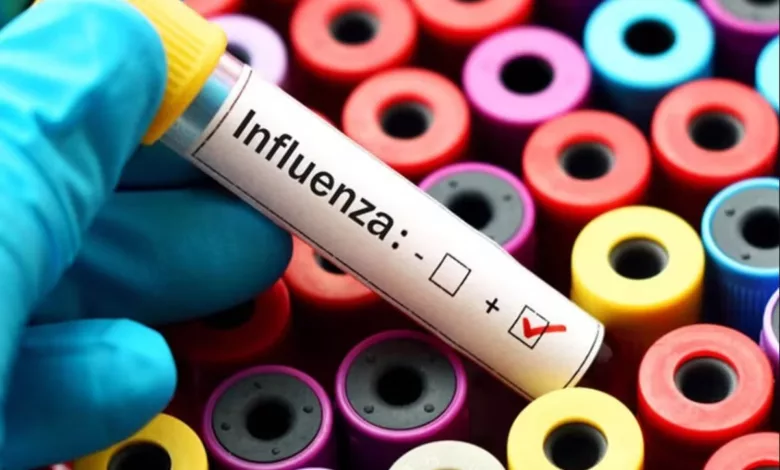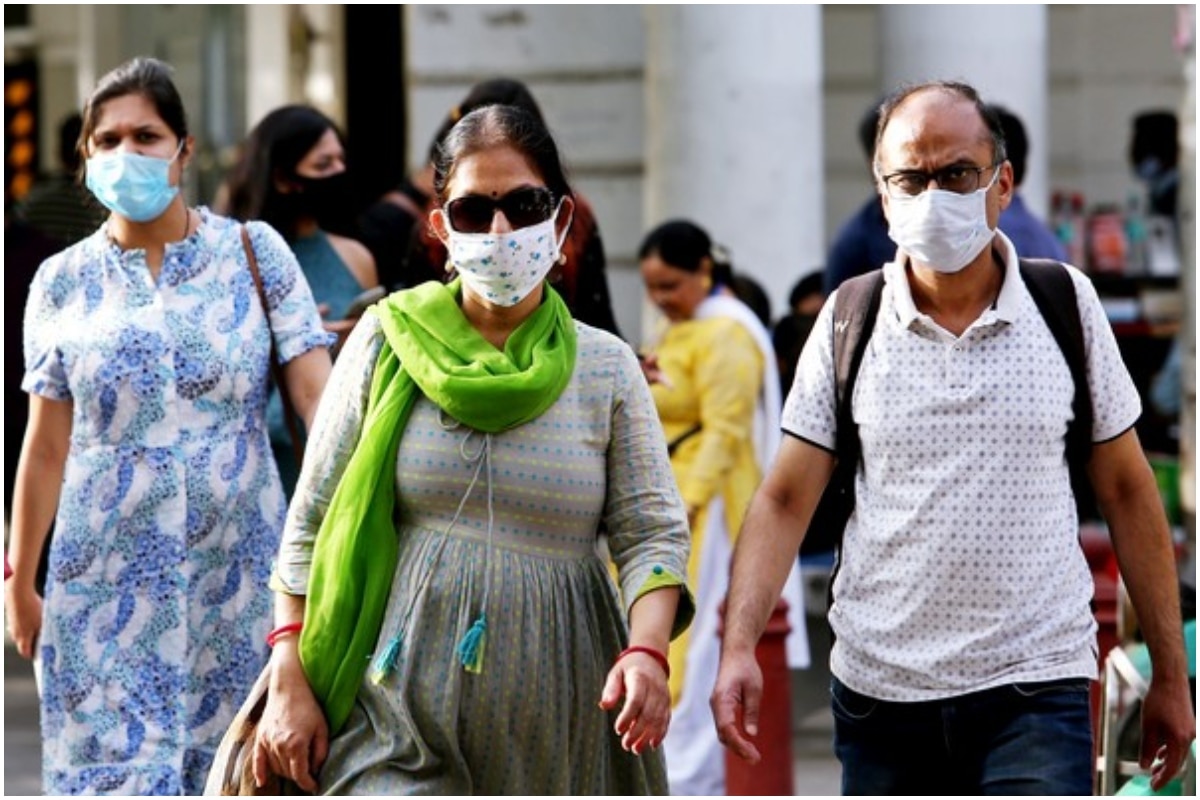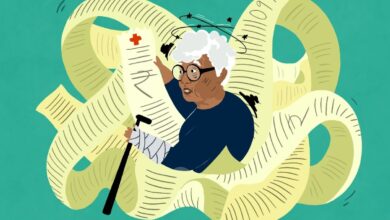H3N2 Virus Outbreak in Delhi: Doctors Alarmed by 150% Rise in Patients.
A 20-bed isolation unit has been built in the emergency block of the LNJP Hospital run by the Delhi government for these patients. According to a senior physician, a 15-person team will be monitoring the patients. ILI (influenza-like disease) cases have increased recently, according to Dr Rajiva Gupta, Senior Consultant In Internal Medicine at the CK Birla Hospital in Gurugram and Delhi.

H3N2 Virus Outbreak in Delhi: Doctors Alarmed by 150% Rise in Patients.
Delhi is experiencing a surge in H3N2 influenza cases due to a rapid rise in ICU admissions, according to doctors and the news agency PTI. In addition to symptoms including a fever, a cold, and body aches, the virus can occasionally leave patients with a chronic cough that renders them very frail. They claimed a roughly 150% rise in patients presenting to OPDs with these concerns.
A seasonal shift might have caused the outbreak, a virus mutation, or the economy is entirely open, according to Dr Viny Kantroo, Consultant, Respiratory, Critical Care, and Sleep Medicine Consultant at Indraprastha Apollo Hospitals, who went into more detail about the possible causes of the increase.
“Children attend school, and they pass it along to the elders. There is a lot of cross-country travel. “These outbreaks are being observed,” she said, according to PTI, when norms have been relaxed and normalcy has returned. Covid was the predominant virus in the previous two years, and there were limits.
A 20-bed isolation unit has been built in the emergency block of the LNJP Hospital run by the Delhi government for these patients. According to a senior physician, a 15-person team will be monitoring the patients. ILI (influenza-like disease) cases have increased recently, according to Dr Rajiva Gupta, Senior Consultant In Internal Medicine at the CK Birla Hospital in Gurugram and Delhi.
For instance, this month, there has been a 1.5 times increase from last month, when we saw two to three patients in OPDs. Fever, discomfort, a cold, and body aches are the symptoms. According to him, patients can occasionally also have diarrhoea, gastrointestinal pain, and even ear fullness.
The senior physician explained that when a patient has comorbidities, the treatment strategy varies just a little and that family members are urged to keep an eye on the patient’s blood pressure, pulse, oxygen saturation, and state of awareness.
It was highlighted that “if these levels vary, the patient necessitates hospitalisation.” Speaking about the present strain, Dr Vikas Deswal, Senior Consultant, Internal Medicine, Medanta, Gurugram, noted that the influenza virus, which comes in three varieties—A, B, and C—is the most prevalent virus that affects our respiratory system.
“Subtype A of them is the most frequently discovered. A subtype of influenza is H3N2. A virus that especially affects young children, the elderly, and persons with underlying medical diseases, causing coughing, fever, colds, sore throats, tiredness, and respiratory problems similar to those of other flu viruses.
According to the two doctors, in some circumstances, patients have been found to have a chronic cough long after their fever has abated.
“One of my patients said that his chronic cough prevented him from attending meetings. Due to it, patients often experience tremendous weakness, according to Gupta. Deswal said it is critical to take precautions since infections might change over time and cautioned against letting your guard down at this time.
People should avoid taking antibiotics, especially if they have H3N2, as they can be hazardous and ineffective in treating viral infections like H3N2.
It is advised to take precautions such as avoiding touching surfaces, washing your hands, adopting COVID-appropriate behaviour, practising social distancing, donning masks, and staying indoors if you are having viral symptoms because the virus spreads by droplets and direct contact. In addition, he stressed the importance of yearly influenza vaccinations for everyone.
H3N2 Death Suspect Case in Maharashtra

The first H3N2 influenza virus-related death in Ahmednagar, Maharashtra, was thought to have been caused by a 23-year-old. He reportedly took his friends on a picnic to Alibaug in the Konkan last week. His health declined once he returned, and he tested positive for Covid.
He later passed away while being treated at a private hospital in Ahmednagar. Although the H3N2 virus was apparently discovered in his blood at his post-mortem, there has been no formal confirmation of this. Following the recent death, the Ahmednagar health department has been placed on notice. India has so far confirmed two deaths attributable to H3N2 – one in Karnataka and another in Haryana.
Incidences of Covid, H3N2 and swine flu are increasing nationwide.
The Integrated Disease Surveillance Programme (IDSP), which conducts real-time surveillance, reports that 955 cases of H1N1, often known as swine flu, had been reported by states as of February 28. A Times of India story cited a health ministry report as claiming that the majority of H1N1 infections have been reported from Tamil Nadu (545), Maharashtra (170), Gujarat (170), Kerala (42) and Punjab (28).
Maharashtra’s Thane district detected seven new Covid-19 cases in the past 24 hours, raising the entire number to 7,47,594, a health official said on Wednesday, a PTI report stated. Patients presenting to emergency rooms in Delhi with symptoms resembling those of the H3N2 influenza virus have increased by over 150%.
The LNJP Hospital in Delhi is preparing to contain cases of H3N2.
The LNJP Hospital of the Delhi Government has established a 20-bed isolation unit in the emergency block for patients exhibiting H3N2 virus symptoms. We have done this and stocked up on medications in accordance with the recommendations of the ICMR.
According to a top physician, a 15-person team has been assembled to oversee the patient’s care. According to Dr Rajiva Gupta, Senior Consultant in Internal Medicine at the CK Birla Hospital in Delhi and Gurugram, the number of ILI (influenza-like illness) cases has increased recently.
According to him, there was a 1.5 times increase in patients admitted to OPDs in March compared to the previous month. Fever, discomfort, a cold, and body aches are the symptoms.
The influenza virus affects our respiratory system most frequently and comes in three different varieties (A, B, and C), according to Dr Vikas Deswal, Senior Consultant, Internal Medicine, Medanta, Gurugram, when explaining about the current strain.
Is the H3N2 virus deadly? It might be another Covid. Experts explained.
/newsdrum-in/media/media_files/c4It1nBSSICY3710wmJX.jpg)
Experts said the outbreak is typical despite growing concerns over the H3N2 influenza virus outbreak and the two deaths it has caused.
About the sudden increase in instances, Dr Dhiren Gupta of the Ganga Ram Hospital in Delhi stated on Saturday that the Covid-induced lockdowns were the cause of the lack of exposure to influenza among children in the previous two years and that the virus is not usually life-threatening.
According to Gupta, who was cited by the news agency ANI, the quick spread of the H3N2 virus—a common type of influenza—has increased the number of cases in children. The most vulnerable populations to seasonal flu are kids and those with comorbidities.
Although it is a mild mutation and exhibits antigenic drift, the H3N2 virus is not fatal. Regardless of which virus it is, the likelihood of death increases if there is comorbidity. The author continued that our immunisation rate is low this year, and the H3N2 vaccine is less effective.
While worries grew and several people questioned whether this would end up being another Covid, pulmonologist Anurag Agrawal said he doesn’t anticipate a significant wave. Only 5% of reported cases have been admitted to the hospital, according to Tarun Sahani, senior specialist in internal medicine at Apollo Hospitals, who was quoted by the news agency PTI.
While there is no need to fear now, Sahani said it is important to take safeguards comparable to those performed during Covid days. She observed that while lockdowns and prolonged mask wear helped restrict the spread of more dangerous virus strains, they also hindered good exposure to seasonal respiratory viruses.
People are concerned as instances are increasing, and hospital admissions are rising as a result of the virus’s spread. Up to March 9, there had been a total of 3,038 laboratory-confirmed cases of many influenza subtypes, including H3N2, with one fatality each in Karnataka and Haryana.
H3N2 is a non-human influenza virus that normally circulates in pigs and has infected humans, but specialists claimed the seasonal flu, which is usually seen in India around January- March and then after Monsoon, will witness a reduction after March. To prevent infection, the government advises adhering to Covid guidelines and suitable hygiene measures.
Although India has reported cases of influenza A (H1N1pdm09), influenza A (H3N2), and influenza B (Victoria), H3N2 is the most common subtype and has resulted in the most hospitalisations.
According to its data, the government said that a more significant proportion of patients merely displayed fever and cough symptoms, but 27% of patients also displayed dyspnea, 16% wheezing, 16% pneumonia, and 6% seizures. Around 10% of patients needed oxygen, and 7% required ICU attention.
edited and proofread by nikita sharma





